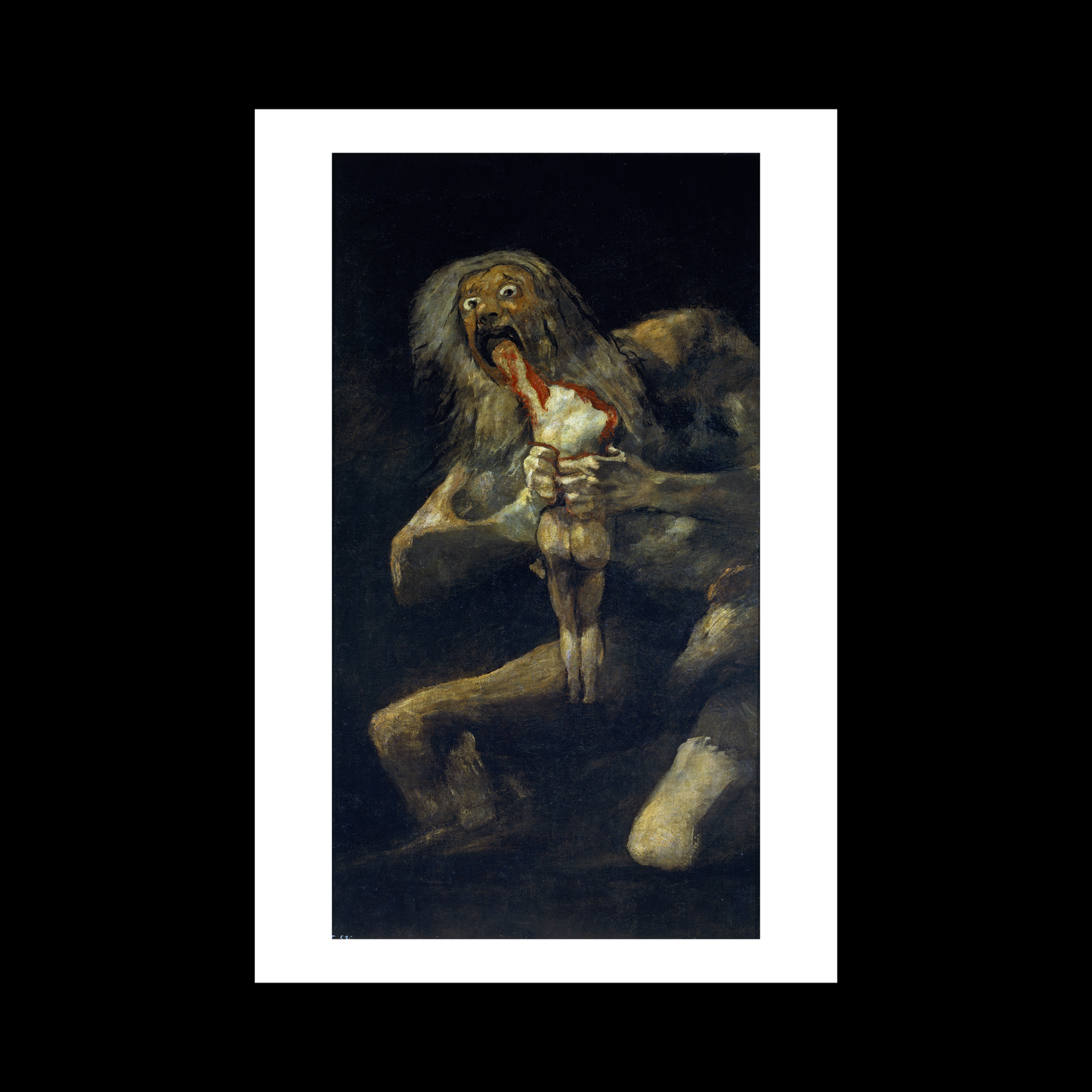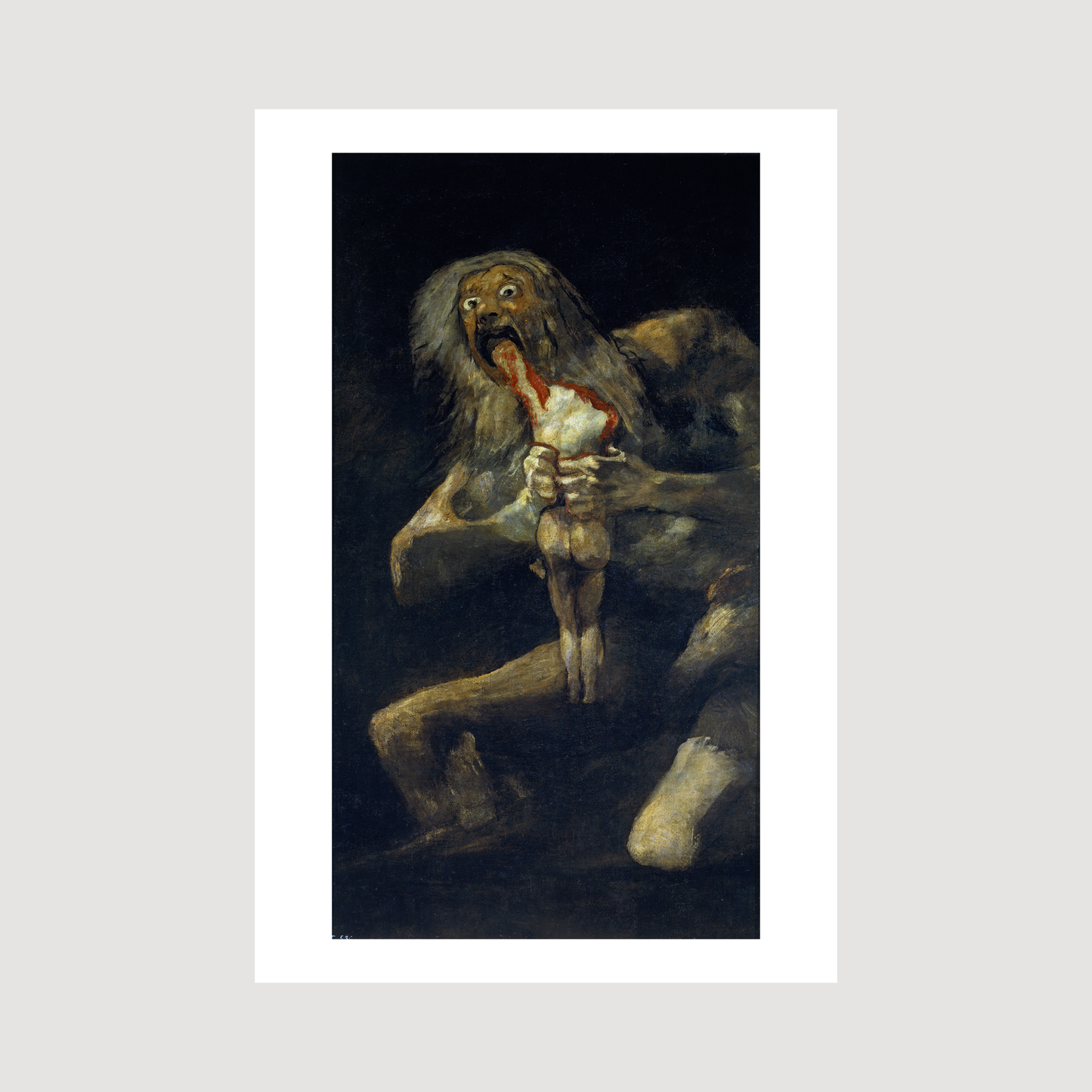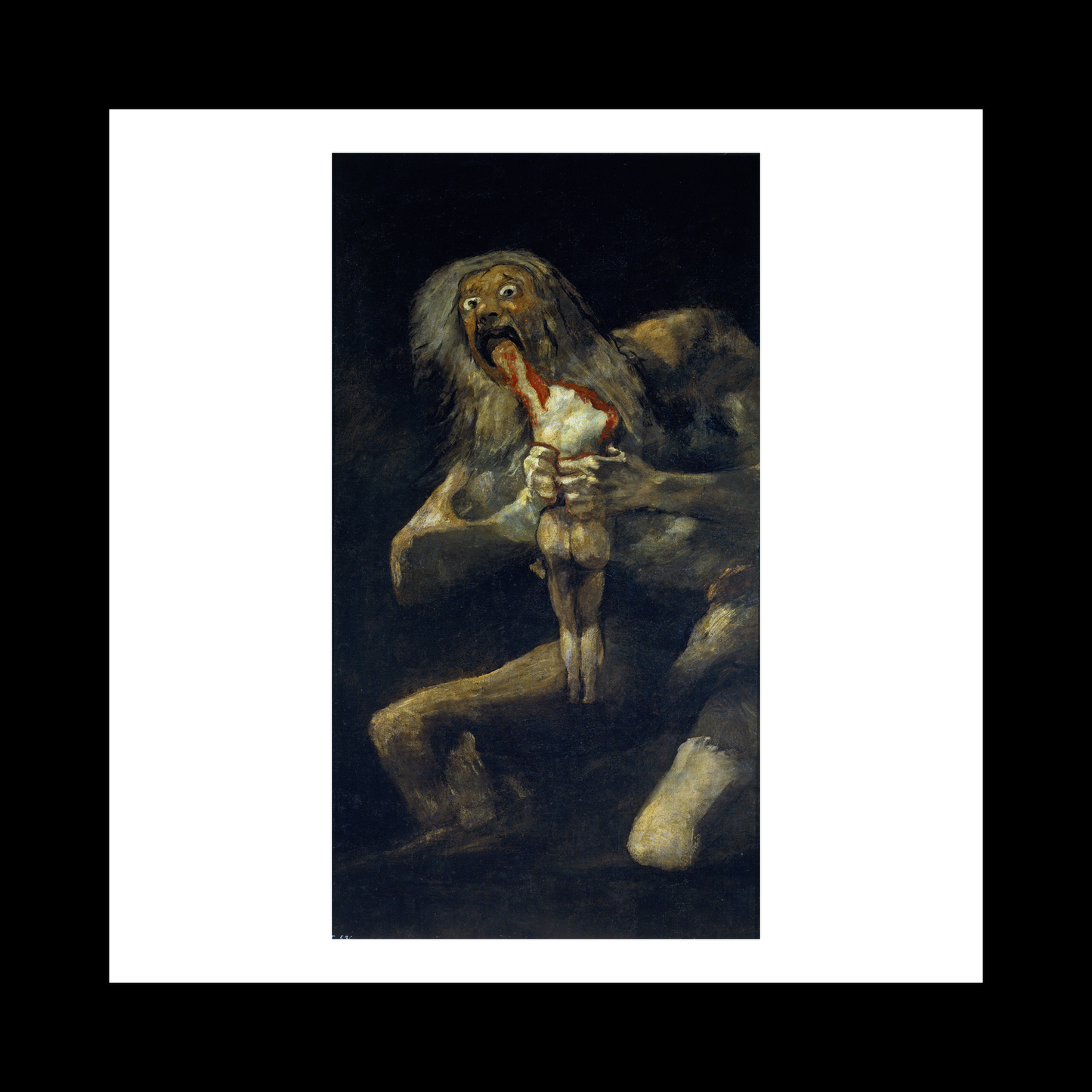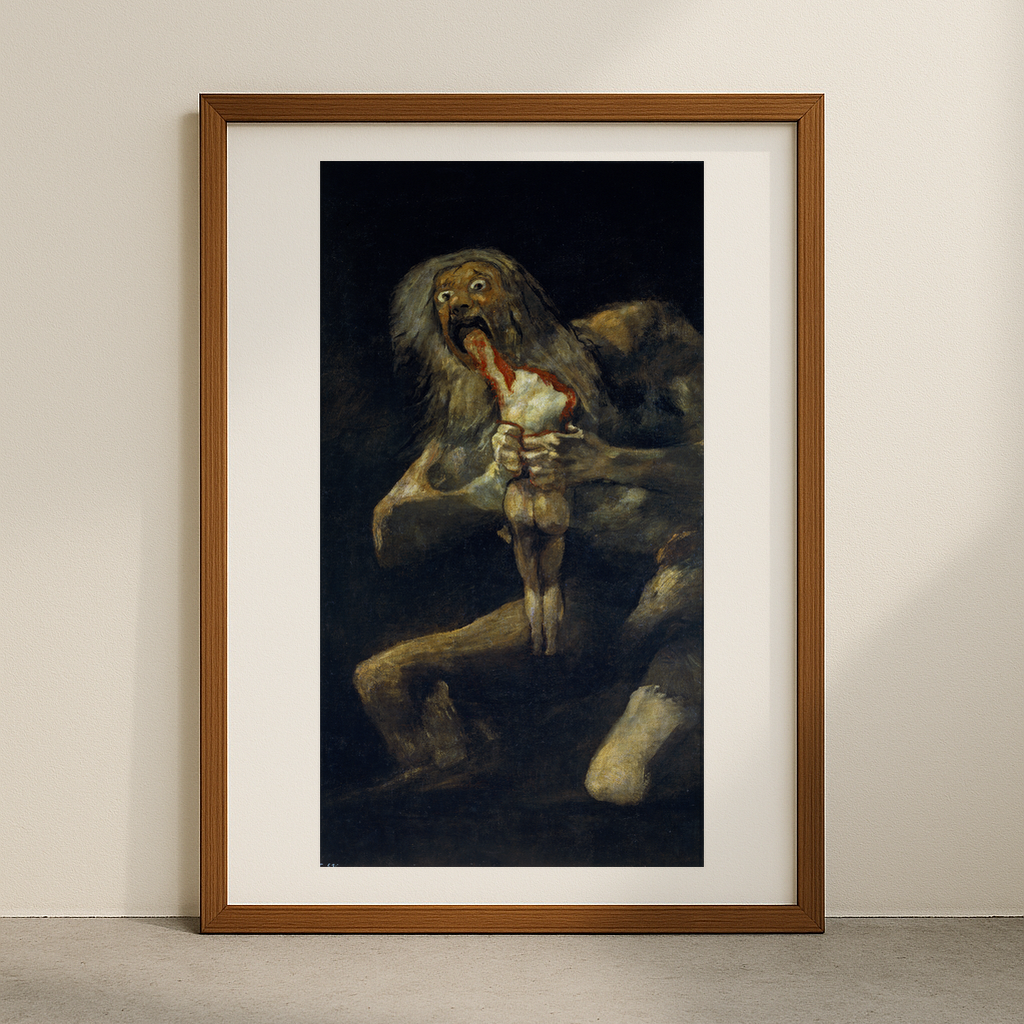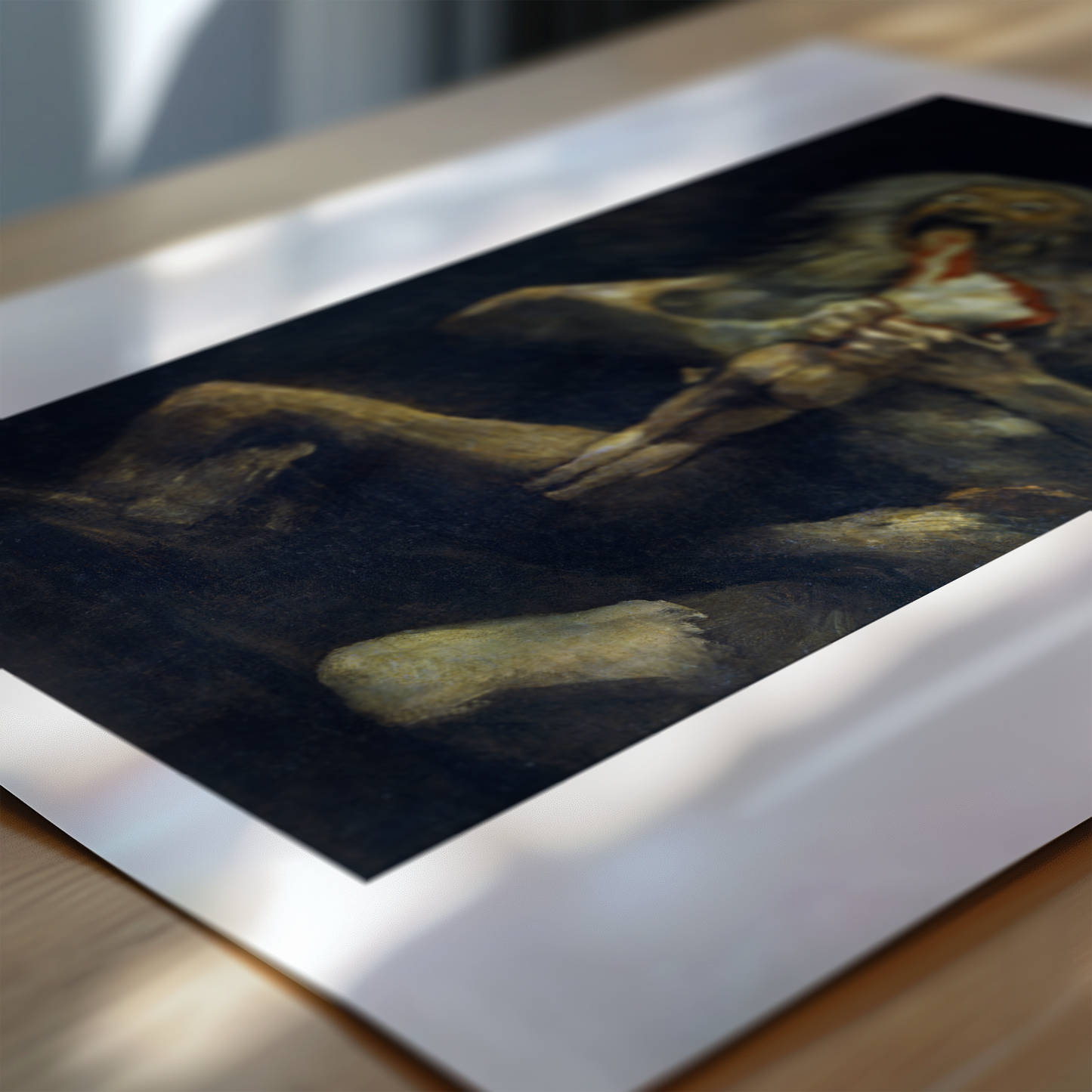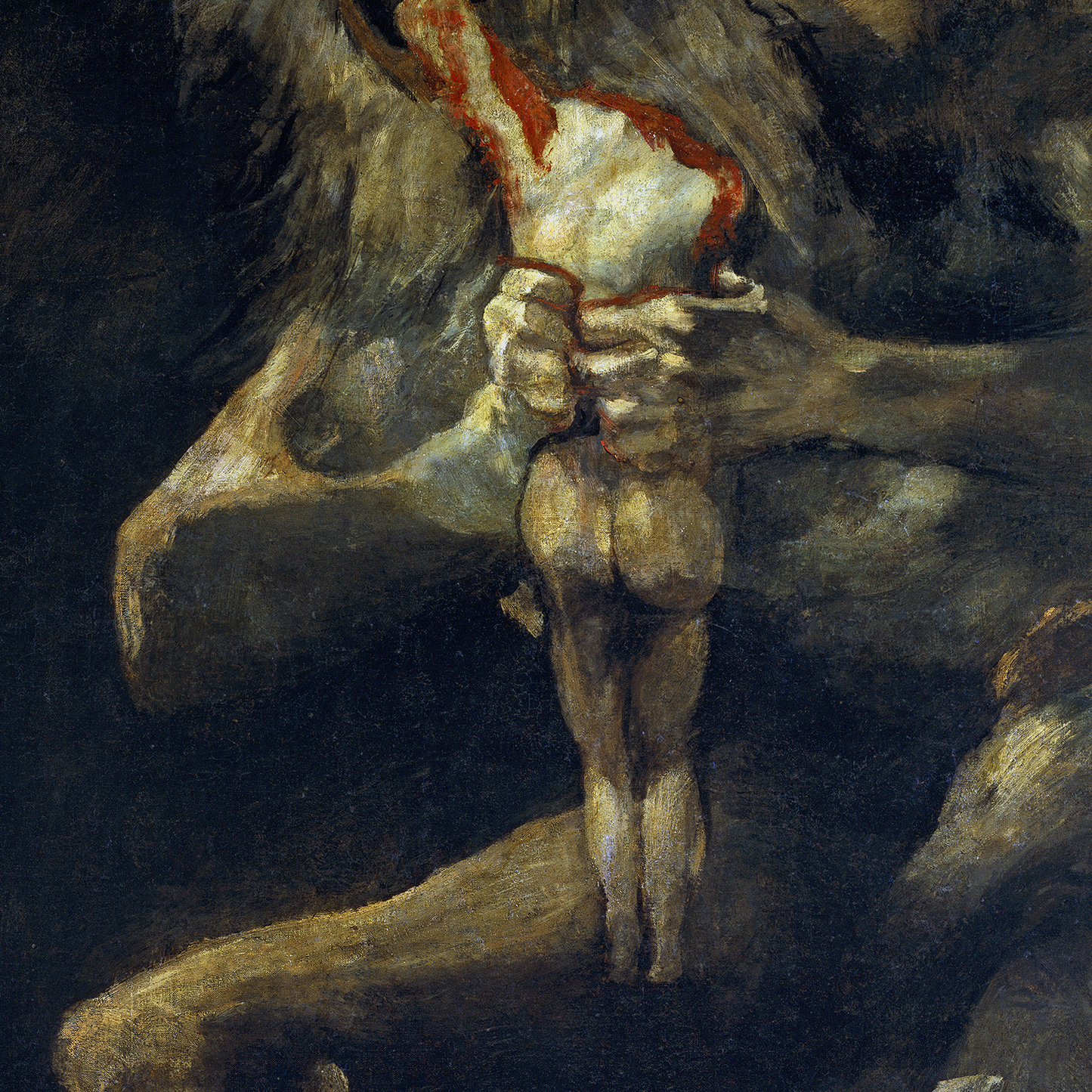1
/
of
6
Saturn Devouring His Son
Saturn Devouring His Son
Regular price
£12.45 GBP
Regular price
Sale price
£12.45 GBP
Taxes included.
Quantity
Couldn't load pickup availability
Goya's 'Saturn Devouring His Son' (1819-1823) stands as one of art history's most disturbing and psychologically intense paintings. Created as part of his 'Black Paintings' series, this work depicts the Roman god Saturn in a frenzied state, consuming the bloody corpse of his own child. The piece showcases Goya's distinctive late-period style, characterised by rough brushstrokes, dark palette, and raw emotional power. The god's wild eyes, dishevelled appearance, and the grotesque way he grips his victim create an atmosphere of primal horror and madness.
This haunting work was painted directly onto the walls of Goya's home, the Quinta del Sordo, during a period when the artist was suffering from illness and increasing isolation. The subject draws from mythology - Saturn (Cronus in Greek mythology) devoured his children to prevent a prophecy that one would overthrow him. However, Goya's interpretation transforms the classical tale into something far more visceral and personally expressive. The painting reflects both his private demons and the political turmoil of Spain during that era.
What makes this work particularly compelling is how it deviates from traditional mythological representations. Rather than a dignified deity, Saturn appears as a deranged cannibal, his body twisted and distorted, emerging from darkness. The technical execution - with its loose, almost modern brushwork and limited colour palette - creates an immediacy that pulls viewers into this nightmare vision. This approach revolutionised how artists could express psychological themes, influencing generations of later painters and establishing Goya as a bridge between classical and modern art.
The painting's enduring power lies in its ability to speak to universal human fears about power, mortality, and the darker aspects of human nature. Created when Goya was deaf and increasingly withdrawn from society, it offers a window into both his personal struggles and broader themes of political violence and human cruelty that remain relevant today.
View full details
This haunting work was painted directly onto the walls of Goya's home, the Quinta del Sordo, during a period when the artist was suffering from illness and increasing isolation. The subject draws from mythology - Saturn (Cronus in Greek mythology) devoured his children to prevent a prophecy that one would overthrow him. However, Goya's interpretation transforms the classical tale into something far more visceral and personally expressive. The painting reflects both his private demons and the political turmoil of Spain during that era.
What makes this work particularly compelling is how it deviates from traditional mythological representations. Rather than a dignified deity, Saturn appears as a deranged cannibal, his body twisted and distorted, emerging from darkness. The technical execution - with its loose, almost modern brushwork and limited colour palette - creates an immediacy that pulls viewers into this nightmare vision. This approach revolutionised how artists could express psychological themes, influencing generations of later painters and establishing Goya as a bridge between classical and modern art.
The painting's enduring power lies in its ability to speak to universal human fears about power, mortality, and the darker aspects of human nature. Created when Goya was deaf and increasingly withdrawn from society, it offers a window into both his personal struggles and broader themes of political violence and human cruelty that remain relevant today.
